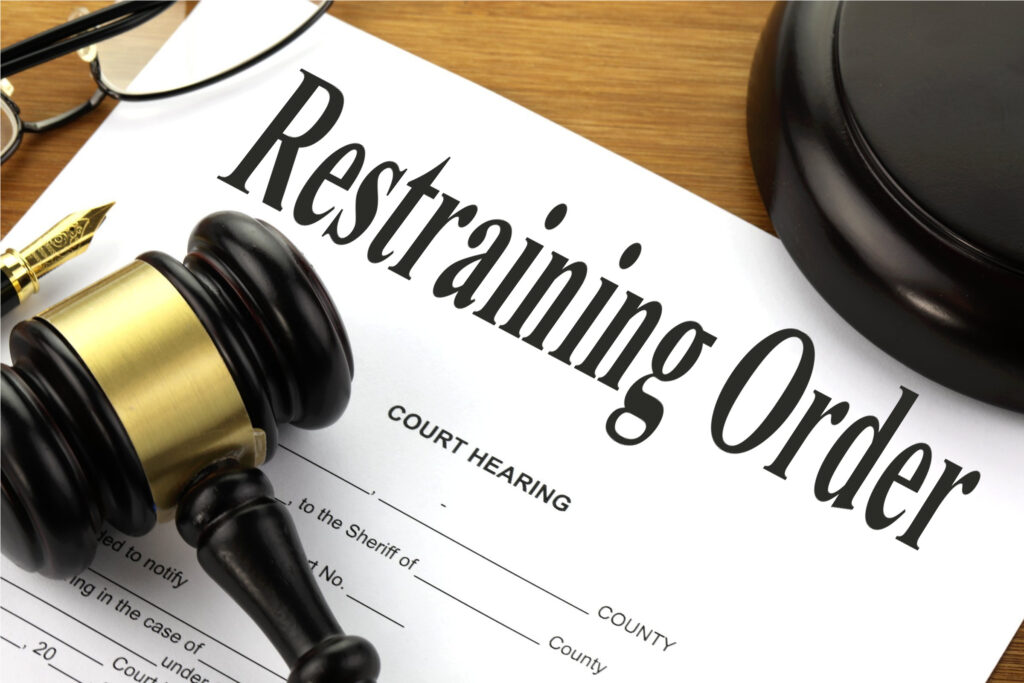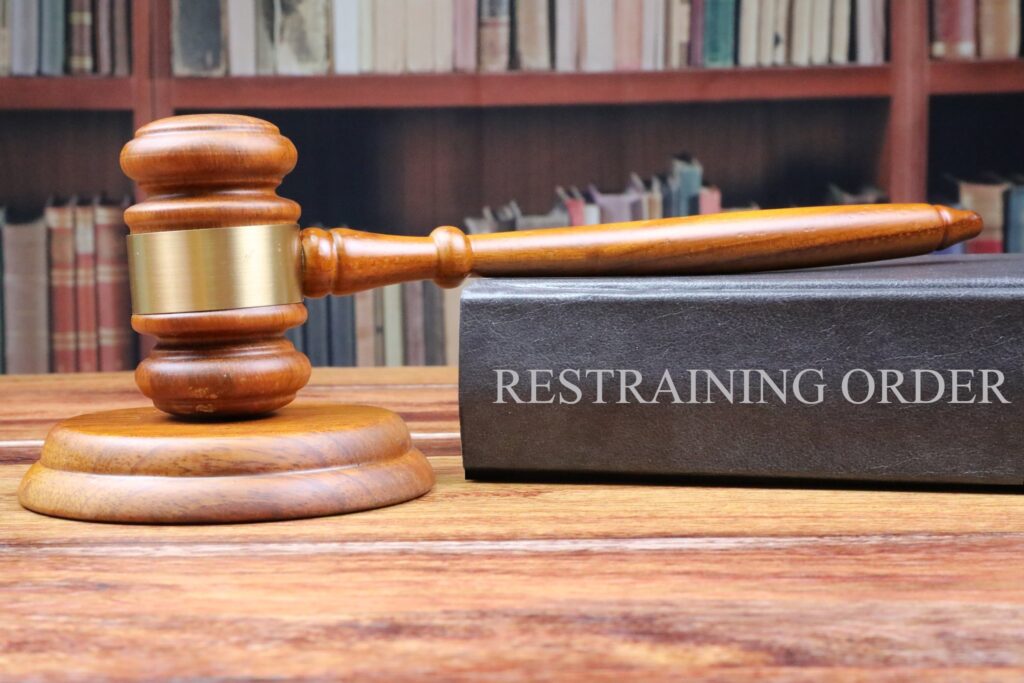Are you or someone you love in need of protection from an abuser? A restraining order can help provide the legal protection that is needed. But it’s important to understand how long does restraining order last and other relevant details related to them — and that’s what we plan on covering in this blog post. We want to provide satisfactory answers to all your queries about devising a legal plan for safety that involves getting a restraining order. Whether it be for yourself or for someone else, we have all the advice and information required covered right here.
Contents
What is a restraining order?
A restraining order (also known as a protective or an injunction order) is a legal document issued by the court, ordering someone to stay away from another person. It’s meant to protect the person who has filed for the restaining order and prevent any further harm or danger that may occur. In most cases, it applies to situations involving domestic violence, stalking, harassment, threats, or other forms of violence.

Types of restraining orders
In most cases, restraining orders are grouped into two categories: Domestic Violence Restraining Orders (DVRO) and Civil Harassment Restraining Orders (CHRO). A DVRO is designed to protect someone from abuse by a family member or domestic partner. On the other hand, a CHRO is meant to protect people from harassment or violence caused by strangers, acquaintances, or anyone who is not considered a family member.
How long does restraining order last?
So, how long does restraining order last? Restraining orders usually last for a set period of time and must be renewed if the person filing for it wishes to extend its duration. Normally, DVRO’s are issued for 3 years while CHRO’s may change from county to county, but are typically valid anywhere between 1-5 years. In some cases, restraining orders may also last indefinitely, depending on the circumstances.
What are the signs that I need a restraining order?
If you suspect that you are in danger, the following signs may clue you in to the fact that a restraining order is necessary: frequent phone calls, emails, or text messages from your abuser; physical violence and/or threats of harm; being followed or monitored by someone; destruction of property; stalking or harassment. It’s important to take action if any of the above occurs, and a restraining order can help to protect you from any further harm.

The process for filing a restraining order
After knowing how long does restraining order last, we will learn about the process for filing it. In order to file for a restraining order, you must contact your state or county court and ask for an “injunction” or “protection from abuse” form. You will then be required to fill out the form and provide evidence of the abuse. Afterward, go to a judge and explain why you need a restraining order. The judge may then grant the restraining order or reject it.
It’s important to note that restraining orders are not the only form of legal protection available — there may be other options depending on your specific situation. If you ever require additional help, contact a lawyer, advocacy group, or hotline number for more assistance.
What is required to get a restraining order?
When filing for a restraining order, you will need to provide the following information: your contact details; details of any threats or abuse made by the person you are trying to protect yourself from; evidence that shows why a restraining order is necessary (e.g., photos, emails, etc.). You should also provide any additional information that the court requires in order to grant the restraining order.
What do I do if I am served with a restraining order?
If you are served with a restraining order, it’s important to abide by its terms. This means that you must stay away from the person who filed for the restraining order and avoid any contact with them, either in person or via phone, email, text message, etc. Failure to do so can result in serious legal consequences such as jail time.
How to lift a restraining order?
In some cases, a restraining order may be lifted if the person who filed for it requests to do so. However, this is only possible if both parties agree that the restraining order is no longer necessary and all safety concerns have been addressed. If not, the restraining order will remain in effect until it expires or a judge decides to discontinue it.
What are the consequences of objecting to a restraining order?
If a restraining order is filed against you, it’s important to comply with its terms. If you object to the restraining order and fail to abide by its requirements, there can be serious legal consequences such as jail time or fines. You may also be subject to criminal charges for violating a court order if your objection results in any type of harm.

Conclusion: How long does restraining order last?
Restraining orders can provide much needed protection from abusers or harassers, but it’s important to know how long does restraining order last and other relevant information. We hope that this blog post has answered all your questions about getting a restraining order and what to do if you’re served one. If you ever have further queries, seek help from a lawyer or an advocacy group. Remember, your safety is always the top priority.
FAQ: Restraining order
What if I need a restraining order right away?
In case of urgency or immediate danger, request a Temporary (ex parte) Restraining Order. This order lasts up to 15 days until you have your full-court hearing, typically within three weeks.
How much does a restraining order cost UK?
Get a restraining order in the UK without worrying about fees. You can opt for paid legal advice or check if you’re eligible for legal aid. Seek help from legal charities such as Refuge, Women’s Aid, Citizens Advice or the Men’s Advice Line to ensure a successful application for an injunction.
What proof do you need for a restraining order in India?
Discover the essential requirements for obtaining a restraining order in India. Simply file a petition through a civil lawyer, accompanied by a written statement detailing why court protection is necessary.
Is an injunction the same as a restraining order in Florida?
The terms ‘injunctions,’ ‘restraining orders,’ and ‘orders for protection’ are all interchangeable in the state of Florida. Their purpose is to protect victims from abuse by an alleged perpetrator. So if you are seeking legal protection, know that all three terms refer to the same mechanism.
How long does a restraining order stay on my record?
Restraining orders have a lasting impact – they stay on your record permanently. This can restrict you from buying a home, purchasing firearms and even being considered for specific job opportunities.
What is the shortest distance for a restraining order?
Find out the minimum distance required for a restraining order. In simple terms, a restraining order is a civil court command that prohibits the recipient from contacting the person who requested it and mandates physical distance, which is usually 50 or 100 feet.
How long does a restraining order last in Texas?
Learn more about the duration of a restraining order in Texas. Generally, restraining orders last for two years but can be renewed if necessary. If either party files a motion to dismiss the order before it expires, the court will hear both sides and decide accordingly.
How do I find out if someone has a restraining order against me?
Discovering if someone has a restraining order against you can be done in three ways: by visiting the courthouse to examine paper or electronic records, or by checking online if your court offers remote access.
Can a restraining order be renewed?
Renewing a restraining order is possible if the initial one has not yet expired. Simply file a motion with the court and present evidence of the abuser’s non-compliance with the order’s conditions. The court will then review your evidence and decide whether to grant an extension or not. Don’t let your safety be compromised – take swift action and seek a renewal if necessary.
What happens if you break a restraining order in Wisconsin?
Breaking a restraining order in Wisconsin is a serious crime. If caught, the abuser can be arrested and prosecuted by the district attorney. Violating an injunction can result in hefty fines and even jail time. As a victim, you can also file for civil contempt in case of a violation of the order. Don’t take restraining orders lightly – they’re in place to protect you.

Trayce served as a grassroots leader and activist in Texas as President of Dallas and Texas Eagle Forum.
Trayce is Mom Caucus Member, Texas Conservative Mamas, Texas Conservative Grassroots Coalition Leader, and Grassroots America Champion of Freedom Honoree.
She currently serves as the Eagle Forum National Issues Chair on Human Trafficking.
Trayce received a Bachelor’s Degree in Marketing from Texas A&M
Currently, she homeschools her youngest child age 13 and graduated her six oldest children, ages 31 to 19.







